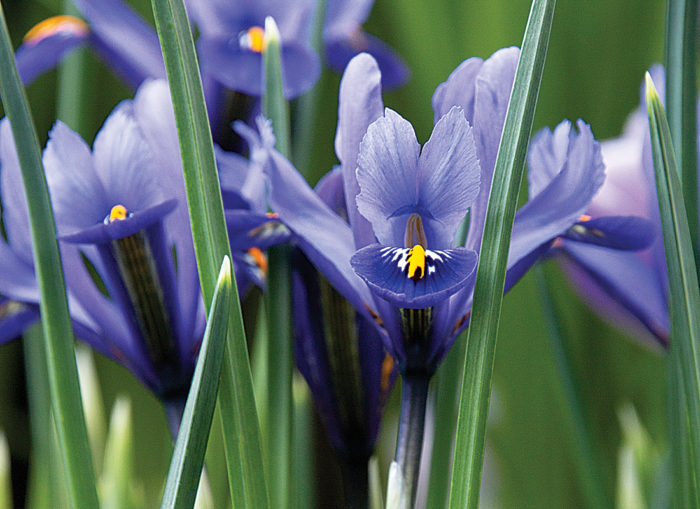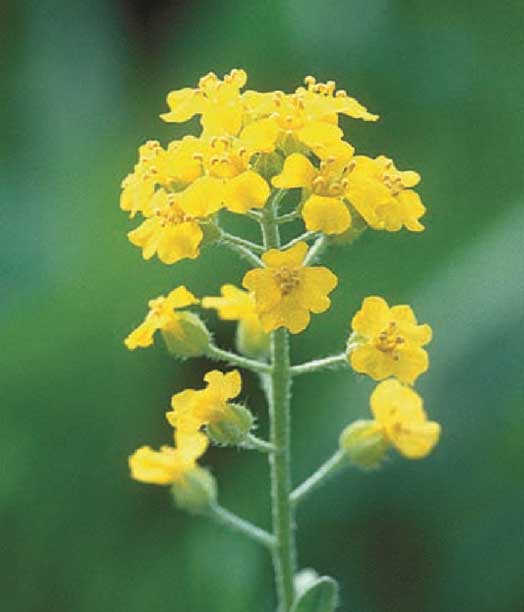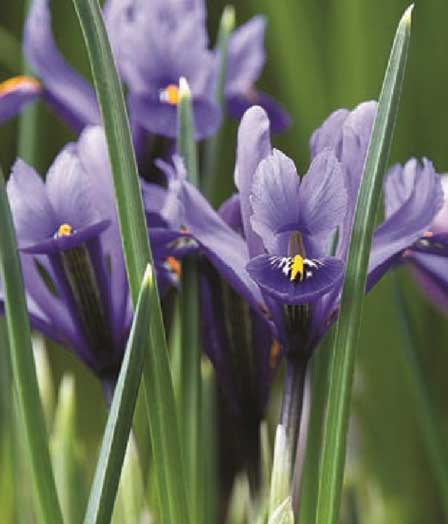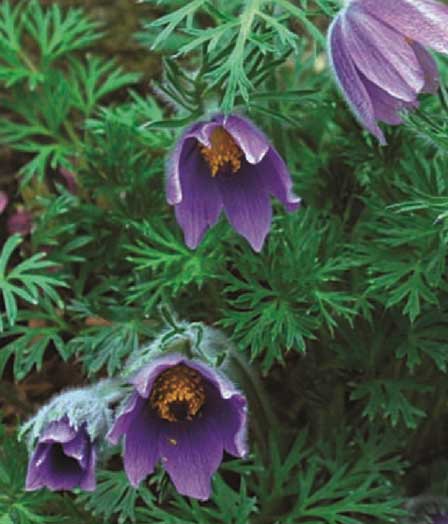
If your first few trips to the nursery can be overwhelming and chaotic, check out our plant recommendations for spring color in your region. There’s no doubt that these spring flowers will cure the winter blues.
1. Mountain alyssum

Alyssum montanum
Zones: 3–9
Size: 6 inches tall and 12 to 20 inches wide
Conditions: Full sun; adaptable to a wide range of soil conditions
Native range: Mediterranean
This evergreen ground cover has small gray-green leaves topped with masses of bright yellow flowers that announce spring has officially arrived in the Rockies. The fragrant perennial does particularly well in rock gardens where it can cascade over stones and down walls. Deadheading after bloom helps it stay in a compact, mounded form while also minimizing its spreading by seed. Once established, it is very drought tolerant.
2. Reticulated iris

Iris reticulata
Zones: 5–9
Size: 3 to 6 inches tall and 3 inches wide
Conditions: Full sun to partial shade; variable soil conditions
Native range: Turkey, Iran, Iraq, and the Caucasus
Resembling crocus from a distance, clumps of reticulated iris are an early harbinger of spring. The fragrant, diminutive flowers come in shades of blue and purple, with stripes of yellow and white on the falls. This easy-care bulb has grasslike leaves that fade away after blooming; it then goes dormant until the next year. It makes a great border plant, but you will find it thriving in my rock garden.
3. Flowering currant

Ribes × gordonianum
Zones: 5–7
Size: 3 to 5 feet tall and 4 to 6 feet wide
Conditions: Full sun to partial shade; rich, well-drained soil
Native range: Hybrid of North American species
While many currants are known for their delicious fruit, this fruitless variety is known for its showy, fragrant blossoms in late spring and for its fall foliage. Clusters of dangling, deep-pink-to-red buds open into trumpet-shaped, light pink flowers on the outside with yellow on the inside, creating a stunning multicolored shrub. In fall, the traditional currant-shaped leaves turn reddish brown, adding nice color to the Western garden. Requiring little maintenance, this shrub can be hedged or serve as a foundation planting.
4. Pasque flower

Pulsatilla vulgaris
Zones: 4–8
Size: 8 to 12 inches tall and wide
Conditions: Full sun to partial shade; well-drained soil
Native range: Europe
One of my favorite perennials, the pasque flower provides many seasons of interest. Its purple, bell-shaped flowers with a bright yellow center are some of the first to bloom in our region. Many different cultivars in shades of purple, blue, red, and pink can now be found. The flowers are soon followed by beautiful fluffy seed heads. Hairy, fernlike foliage offers interesting texture throughout the growing season. Pasque flower gently reseeds in the right conditions.
—Michelle Provaznik is the executive director of the Gardens on Spring Creek in Fort Collins, Colorado.



















Comments
Log in or create an account to post a comment.
Sign up Log in